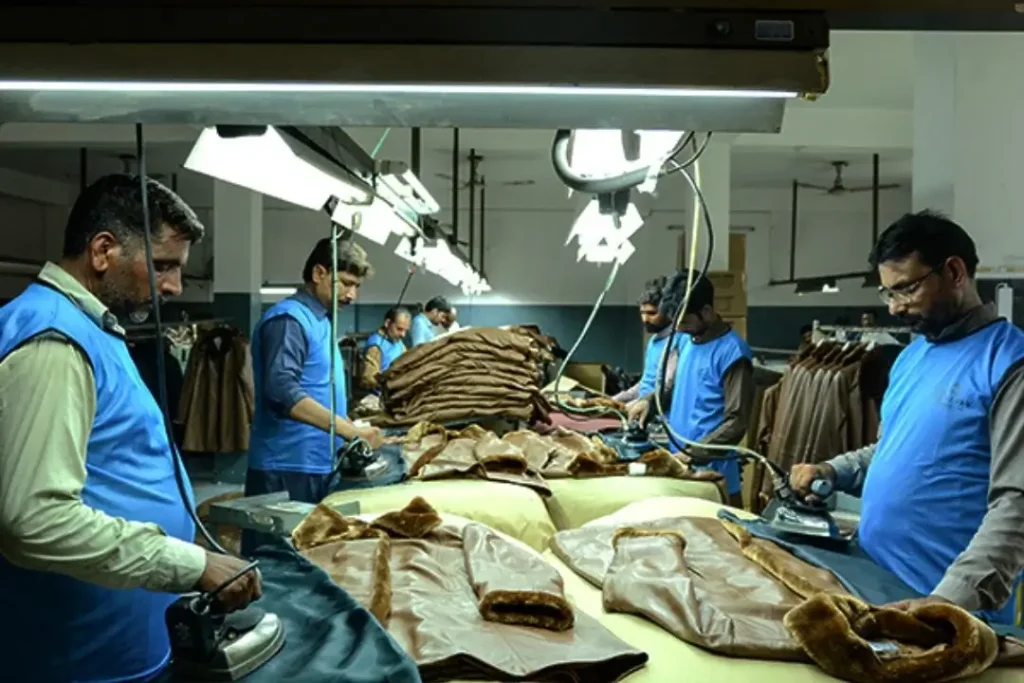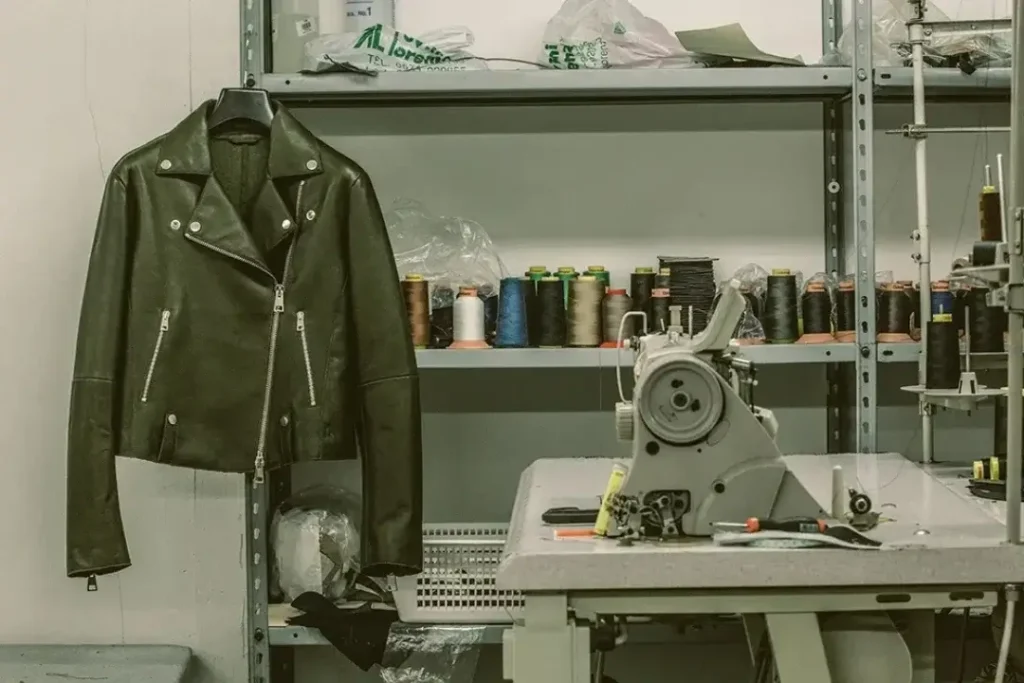
Why Clothing Brands Fail
Top Different Types of Shirts for Women and Men Top Different Types of Shirts for
The Innovative Materials in Jacket Manufacturing 2025
Just like any other industry, the jacket manufacturing industry is also on its way to innovating new and better materials for its audience. The hidden force that drives this innovation is the surging competition in jacket apparel clothing and the need for better performance and quality fabric. It is also the secret of Global brands that have realized how to keep ahead of the competition using these innovative and new fabrics that their consumers love.
So, jacket brands can even create jackets that balance style, function, and environmental responsibility through sustainable practices and new technologies. In this blog, you will learn about all new innovative materials in jacket manufacturing that can transform your products, help improve your brand’s image, and meet what consumers expect. Let’s explore how you can take advantage of this exciting trend in jacket manufacturing and differentiate your brand to positively impact the planet.
Today’s fashion world is changing quite fast, and customers want more than just great looks. They are looking for sustainable, lightweight, and versatile jackets made from materials that suit their busy lives. Environment-conscious customers are those who look after the well-being of Earth as far as their purchase is concerned, and they look for companies with like-minded values. There is a rising need for environment-friendly jackets. To fill this demand, innovative materials in jacket production are significant. Jackets are getting lighter because of modern fabrics, thus making them more comfortable to wear and lighter in style; diverse styles can also be worn on different occasions to suit active people.
The environmental influence of many traditional materials especially synthetic fibers, remains a major issue for both consumers and businesses alike. Eco-friendly choices can intensely reduce the amount of damage your products cause to the environment. Organic cotton, recycled polyester, and bio-based textiles all help cut down on fossil fuel dependency, save water, and minimize pollution during production. These materials would benefit your brand in the long run. You help the environment, but at the same time, you will position your brand as the responsible leader in the industry, which is one way of creating customer loyalty, an important advantage for any brand.

In a busy market, competition is critical, and the use of new materials can be an important competitive edge. You can make your brand distinct from those that depend on traditional materials by opting for high-performance, sustainable advanced textiles. Such materials will afford advantages such as moisture-wicking properties, breathability, durability, and a reduced environmental impact. With your brand growing, you may consider which materials can help you achieve innovation in jackets. In fact, by promoting commitment to material innovation, you also can attract media attention and raise your brand image to attract audiences who value sustainable fashion. By embracing these innovations, you will guarantee your brand succeeds in the future of fashion.

Hybrid materials combine eco-friendly features with high-performance attributes, opening the door for future jacket manufacturing. A good example is bio-polyester, which is a combination of traditional polyester and sustainable elements that provide strength with minimal environmental impact. Hybrid material investment will support sustainability goals and progress your brand’s competitiveness because it appeals to a growing market interested in performance and responsibility. Integrating these materials will keep your brand at the forefront of sustainable, high-performance jacket manufacturing.

Innovative materials help to progress your product range and confirm a sustainable profit that drives the future of your company by bringing about strength, comfortability in usage, eco-friendliness with durability, and long-term benefits leading to savings.
Using advanced materials for your jackets means they will be more solid and last longer. These premium fabrics can handle the daily routine, so you will only have to replace them sometimes. This is great for the environment and attracts customers who value durable products. By selling long-lasting jackets, your brand is signifying concern for quality, which makes trust and devotion among cautious consumers who don’t want to be part of fast fashion that is harmful to the planet.
Comfort and performance are two areas where innovation excels in today’s clothing market. Lightweight and breathable fabrics make jackets feel almost weightless, keeping you warm and protected. These materials help in moisture management and air ventilation, thus certifying well-being either hiking or traveling. By focusing on ease and performance, you attract the right customers who want versatile clothing for both outdoor activities and everyday use, resulting in happier customers and repeat purchases.

You can boost your brand appeal to customers who care about the environment by using eco-friendly materials in your jacket production. More and more people are becoming conscious of environmental issues, and thus, they begin to look for responsible jacket brands. Using eco-friendly products such as recycled fabrics proves the fact that your brand cares about the health of the planet. This green approach differentiates you from other companies, and you get a loyal customer market that respects your efforts regarding the environment. Prominently communicating your commitment in your marketing can attract and retaina customer who cares about the environment.
While innovative materials might cost more upfront, they save you money in the long run. These materials reduce waste and improve production effectiveness, resulting in lower costs for both production and maintenance. Durable jackets require fewer replacements, cutting down costs related to returns and refunds. As your brand gains a reputation for quality and durability, customer constancy grows, leading to increased sales. You may boost your profits and the fashion industry by using advanced materials that extend the life of your product and minimize waste. Your approach toward attaining a competitive market for a more environmentally conscious industry is through supporting environmental responsibility for your brand.

Knowing the current market trends and consumer preferences is crucial to positioning your brand effectively in the changing jacket manufacturing landscape. Here’s a closer look at vital statistics and data that can guide your strategic decisions.
|
Material
|
Growth Rate (2025)
|
Market Value (USD)
|
|---|---|---|
|
Recycled Polyester
|
12%
|
5.6 billion
|
|
Organic Cotton
|
15%
|
3.2 billion
|
|
Biodegradable Polymers
|
18%
|
1.8 billion
|
The growth statistics clearly show an upward trajectory for a variety of materials in an expanding market for sustainable fabrics. The market for recycled polyester is expected to grow at a healthy 12% to $5.6 billion in 2025. This material, being generally applicable and acceptable by the consumer, is back in clothing, especially jackets.
The standout here is biodegradable polymers, with an impressive growth rate of 18%. This indicates a growing demand for environmentally aware alternatives that meet modern consumer expectations. By investing in these materials, you can not only make progress toward sustainability but also tap into profitable market opportunities.
|
Material
|
Key Feature
|
Popular Application
|
|---|---|---|
|
Graphene
|
Superior insulation
|
Winter and high-altitude jackets
|
|
Aerogel
|
Extreme thermal insulation
|
Expedition gear
|
|
Bio-Polyester Blends
|
Eco-friendly durability
|
Urban fashion jackets
|
Innovative materials are transforming the land of jacket manufacture, and knowledge of their distinct characteristics will boost your product development. Graphene, an excellent insulator, stands high in winter and high-altitude jackets. Use this as your opportunity to make a mark using cutting-edge technology that provides warmth without adding weight.
Meanwhile, aerogel, famous for its extreme thermal insulation, is excellent for expedition gear. By using aerogel, you can target a niche market of adventurous consumers who seek the best protective gear for extreme conditions.
The growing popularity of bio-polyester blends indicates the balance of eco-friendliness with durability in urban fashion jackets. This new trend permits you to combine style with sustainability, appealing to urban customers who seek fashion-forward but responsible choices.
|
Consumer Demand
|
% Preference
|
|---|---|
|
Recycled Materials
|
42%
|
|
Plant-Based Alternatives
|
30%
|
|
High-Performance Fabrics
|
28%
|
Consumer preferences are dramatically shifting toward sustainability. A 2025 survey reveals that 42% of consumers prefer jackets made from recycled materials, clearly showing that eco-friendly practices resonate with your target market.
Plant-based alternatives are at 30% and indicate great interest in organic materials that promise sustainability and style. In addition, high-performance fabrics remain an important attraction to consumers, taking up 28% of the market preference, a factor vital to those who consider functionality with a responsibility to the environment.
These statistics and trends show that the consumer today looks for much more than any jacket. Instead, they prefer products that meet their values and support sustainable practices. By aligning your product development with these market insights, you’re likely to achieve a larger portion of your target market.
Using innovative materials, reacting to consumer preferences, and knowing clothing market growth can arm you to perfect your jacket line. Highlighting the value of recycled, plant-based, and high-performance materials in your marketing strategy is perfectly in tune with what consumers are now concerned about, and you will be able to brand yourself not just as a builder but as a leader in the sustainable fashion movement.
Using innovative materials in jacket manufacturing will work out excellently for your brand. Adopting new-age fabrics like biodegradable polymers and recycled polyester can guarantee better durability and relief with the stylishness of the jackets. It fulfills the latest demand for eco-friendly goods and helps establish your brand on the topmost platform among the eco-friendly leaders in the market. As the demand for eco-friendly jackets is on the rise, you will get an opportunity to serve trustworthy customers keen to make the right choice for responsible choice and quality garments. Thus, by targeting the best environmentally friendly and performance-based materials, you can establish your business in a very competitive market.
The most sustainable materials for jacket creation are polyester, organic cotton, and decomposable polymers.
They provide better insulation, strength, and comfort, making jackets suitable for extreme conditions.
While initial investments may be higher, they reduce long-term costs through improved proficiency and durability.
These materials combine eco-friendliness and high performance, such as bio-polyester blends.
Patagonia, Columbia, and North Face are examples of brands that have successfully participated in innovative materials.
Expert Custom Clothing Manufcaturer

Top Different Types of Shirts for Women and Men Top Different Types of Shirts for

What You Must Know About Clothing Samples? Before You Produce a Single Garment: What You

How Much Does It Cost To Make a Hoodie A Complete Cost Breakdown for Custom

Discover the Types of Buttons Discover the Types of Buttons That Transform Style and Functionality
Most Recent Posts
Expert Custom Clothing Manufcaturer
Join our Mailing list!
Get all latest news, exclusive deals and updates.